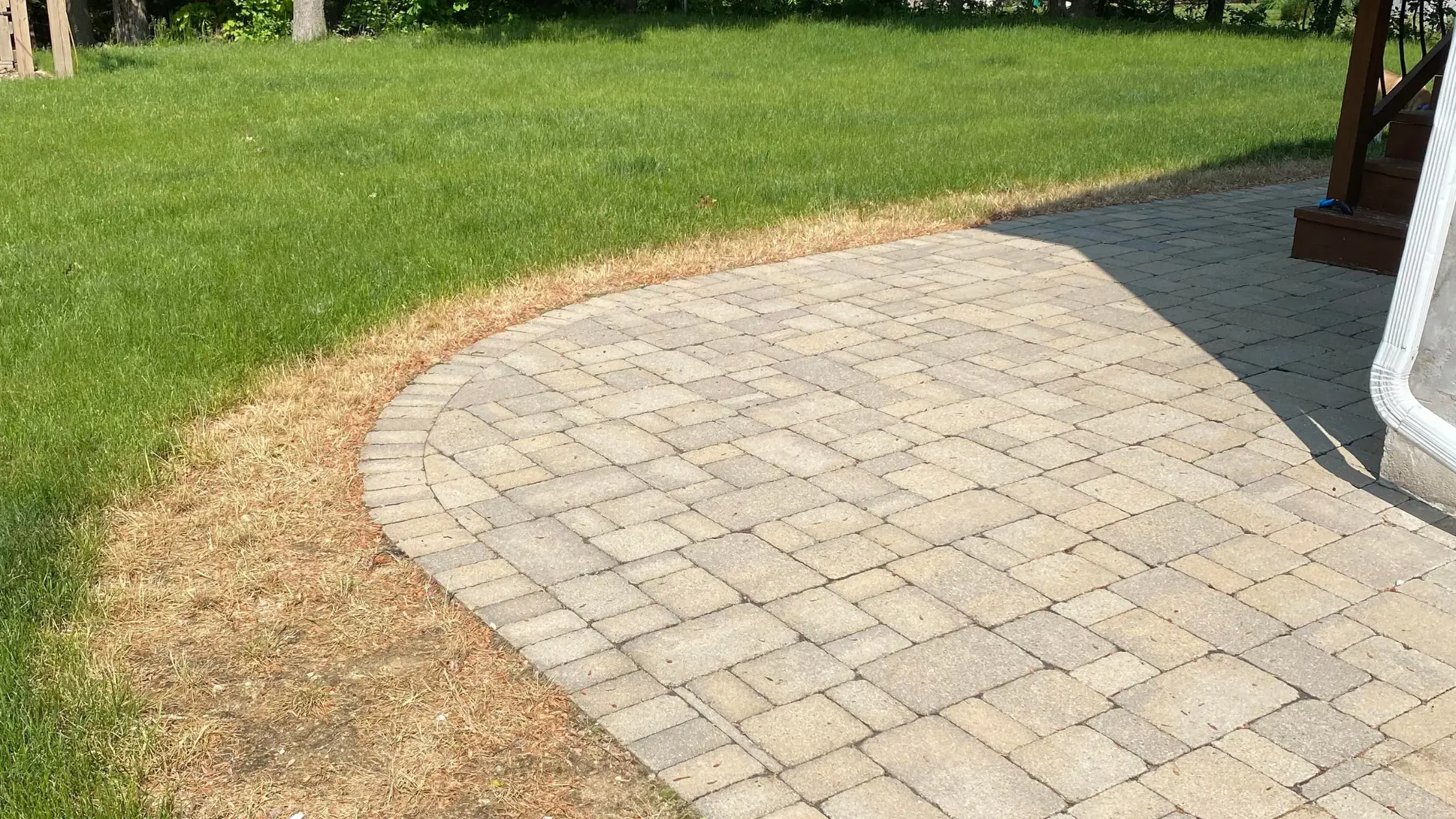Winter road salt keeps driveways and sidewalks safe, but it can wreak havoc on your lawn. If you’re noticing brown patches along the edges of your yard as the snow melts, lawn salt damage is likely the culprit. Salt pulls moisture from the grass, weakens the soil, and can lead to dead spots if left untreated.
In this guide, we’ll cover:
- Signs of Lawn Salt Damage
- How to Repair Lawn Salt Damage
- How to Prevent Lawn Salt Damage Next Winter
Signs of Lawn Salt Damage
Not sure if road salt is harming your grass? Look for these telltale signs:
- Brown or yellow grass near sidewalks, driveways, and roads – Salt pulls water from grass, causing it to dry out and die.
- Slow spring recovery – If certain areas of your lawn remain patchy while the rest greens up, salt damage may be to blame.
- Soil crusting – A white, crusty layer on the soil surface can indicate excessive salt buildup (learn more from University of Massachusetts Extension).
- Weak grass growth – Salt-damaged areas may struggle to regrow in spring, even with watering and fertilization.

Lawn salt damage causing brown grass near a roadway after winter.
How to Repair Lawn Salt Damage
If winter salt has taken a toll on your lawn, follow these steps to revive it:
- Flush out the salt – Deeply water affected areas to help wash away excess salt from the soil (recommended guidelines from Cornell University).
- Apply gypsum – Gypsum helps counteract the effects of salt by improving soil structure and increasing water penetration.
- Rake and remove dead grass – Clear away salt-damaged patches to allow new growth.
- Overseed with salt-tolerant grass – Some grass varieties, like tall fescue, recover better in high-salt conditions (see Penn State Extension). Note, overseeding cannot be done with pre-emergent.
- Apply a balanced fertilizer – A slow-release fertilizer can help strengthen new grass and restore soil health.

A homeowner preparing their lawn for seed after winter salt damage.
How to Prevent Lawn Salt Damage Next Winter
A little preparation can go a long way in protecting your lawn from salt damage. Here’s how to safeguard your grass next winter:
- Use alternative deicers – Sand, calcium magnesium acetate, or kitty litter are safer for grass than traditional rock salt (learn more from Penn State Extension).
- Create a buffer zone – Shovel snow away from grassy areas to prevent salt-laden runoff from pooling in your yard.
- Apply a winter mulch – A light layer of mulch or straw can help shield grass from salt exposure.
- Rinse salt-prone areas – During winter thaws, lightly watering along driveways and sidewalks can help minimize salt buildup.

A driveway treated with sand as a lawn-friendly alternative to rock salt.
Give Your Lawn a Fresh Start This Spring
Lawn salt damage may seem tough to fix, but with the right care, your grass can recover. If your lawn needs extra help, Mainely Grass is here to restore it. Our expert treatments remove salt buildup, promote healthy regrowth, and protect your yard for seasons to come.
Talk to our experts today and bring your lawn back to life!
